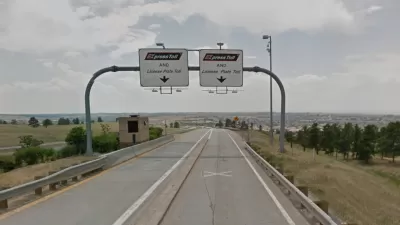Yes, vehicles have become more fuel efficient, but a just-released report by the Institute on Taxation and Economic Policy shows that inflation is 3.5 times more responsible for the decline in the purchasing power of the gas tax.
House Ways and Means Chair Paul Ryan said it best in his opening statement on June 17 in the first Congressional hearing on transportation funding in three years [posted here]:
People have been using less gas. They’re driving more fuel-efficient cars. You get a lot more miles to the gallon than you used to. And so gas just doesn’t track use as well as it used to. And we can’t just chase fuel efficiency with higher taxes. [Italics added].
Two days later, Vermont Transportation Secretary Sue Minter agreed, and pointed to Oregon's new pricing program, OReGO that begins July 1, based on mileage driven, not fuel consumed, as holding much promise.
However, the Institute on Taxation and Economic Policy (ITEP) concludes that the vehicle miles traveled fee (VMT fee), called a road usage charge by the Oregon Department of Transportation (ODOT), is a "half-baked solution."
To understand why, one must recognize that the primary reason the current gas tax is losing its effectiveness is not vehicle fuel efficiency but inflation, specifically construction cost inflation.
Over the same twenty-year period that national, on-road fuel-efficiency improved by 12 percent, transportation construction costs grew by 60 percent. The result is that for every $1 that fuel-efficiency gains drained from the purchasing power of the nation’s transportation funds, inflation has taken a much larger $3.50.
Simply put, OReGO's flat VMT fee of 1.5 cents per mile driven is no better than the state's flat gasoline excise tax of 30 cents per gallon, though a deal is in the works to hike it by four cents over two years by sacrificing the state's three-month-old clean fuels program.
The June report actually praises the VMT fee (though they refer to it as a tax) when it comes to dealing with fuel efficiency and alternative fuels reducing gas tax receipts:
Indeed, as cars gradually transition away from gasoline as their primary means of propulsion, something akin to the VMT tax will eventually have to be implemented if drivers are going to continue to pay for their use of the roads. There is no doubt that Oregon’s new law, if successfully implemented on a comprehensive and mandatory basis, would be immune from tax base erosion occurring because of rising fuel-efficiency.
Much has been made of the significance that Oregon was the first state to pass a gas tax in 1919, and now is the first to transition, if only partially, to a VMT fee. Yet ITEP sees irony there:
The federal government and 31 states, including Oregon, levy fixed-rate gas taxes that are vulnerable to the impact of inflation. Oddly enough, this design flaw can actually be traced back to Oregon, which implemented the nation’s first gasoline tax in 1919 at a fixed-rate of 1 cent per gallon. Within 10 years, every state followed suit with their own fixed-rate gas taxes patterned after Oregon’s law.
The reason why the road usage charge is flat and not indexed for inflation is because that's what the authorizing legislation, SB 810 indicated. In fact, Planetizen describes the bill as Plan B in its first post on the program after a stronger bill failed to pass.
ITEP's 2011 report addressed the fundamental problem of flat gas taxes and how to correct them, posted here.
FULL STORY: Pay-Per-Mile Tax is Only a Partial Fix

Planetizen Federal Action Tracker
A weekly monitor of how Trump’s orders and actions are impacting planners and planning in America.

Restaurant Patios Were a Pandemic Win — Why Were They so Hard to Keep?
Social distancing requirements and changes in travel patterns prompted cities to pilot new uses for street and sidewalk space. Then it got complicated.

Map: Where Senate Republicans Want to Sell Your Public Lands
For public land advocates, the Senate Republicans’ proposal to sell millions of acres of public land in the West is “the biggest fight of their careers.”

Maui's Vacation Rental Debate Turns Ugly
Verbal attacks, misinformation campaigns and fistfights plague a high-stakes debate to convert thousands of vacation rentals into long-term housing.

San Francisco Suspends Traffic Calming Amidst Record Deaths
Citing “a challenging fiscal landscape,” the city will cease the program on the heels of 42 traffic deaths, including 24 pedestrians.

California Homeless Arrests, Citations Spike After Ruling
An investigation reveals that anti-homeless actions increased up to 500% after Grants Pass v. Johnson — even in cities claiming no policy change.
Urban Design for Planners 1: Software Tools
This six-course series explores essential urban design concepts using open source software and equips planners with the tools they need to participate fully in the urban design process.
Planning for Universal Design
Learn the tools for implementing Universal Design in planning regulations.
Heyer Gruel & Associates PA
JM Goldson LLC
Custer County Colorado
City of Camden Redevelopment Agency
City of Astoria
Transportation Research & Education Center (TREC) at Portland State University
Camden Redevelopment Agency
City of Claremont
Municipality of Princeton (NJ)



























